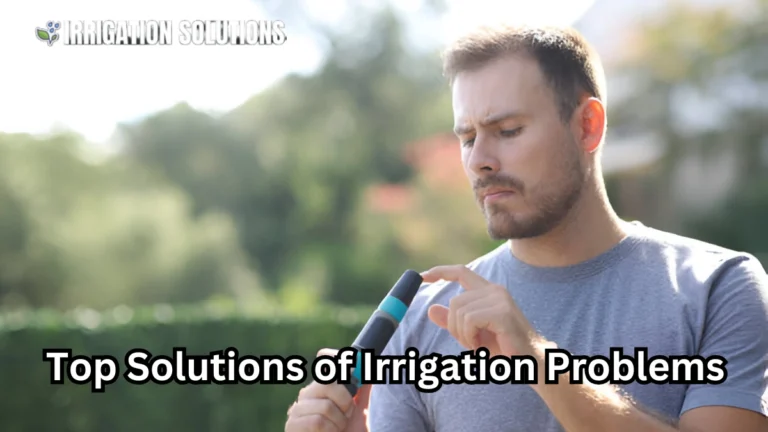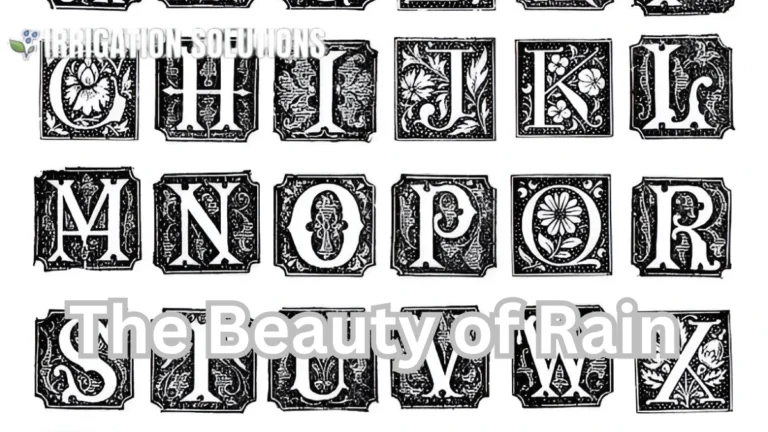best watering and irrigation systems

Effective watering and irrigation systems are essential for maintaining healthy plants, improving crop yields, and conserving water. Whether you’re a home gardener, a commercial farmer, or a landscaper, choosing the right irrigation system can significantly impact efficiency and sustainability.
In this guide, we’ll explore different watering and irrigation systems methods, their benefits, how to optimize water usage, and modern technological advancements that make irrigation more effective.
Understanding Watering and Irrigation
watering and irrigation systems is the controlled supply of water to plants to support their growth. While natural rainfall provides moisture, it’s often insufficient, especially in dry regions or during droughts. A well designed irrigation system ensures plants receive the right amount of water at the right time.
Why Efficient Irrigation Matters?
- Conserves Water Prevents overuse and reduces water waste.
- Boosts Plant Health Ensures plants get consistent hydration.
- Increases Crop Yield Maximizes agricultural productivity.
- Reduces Labor Costs Automated systems save time and effort.
- Prevents Soil Erosion Regulates water flow to prevent runoff.
Types of Irrigation Systems
Different irrigation methods suit different environments and plant types. Choosing the right system depends on factors like soil type, climate, and crop requirements.
Drip Irrigation
Drip irrigation delivers water directly to plant roots through a network of tubes, emitters, and valves.
Benefits of Drip Irrigation
✅ Water Efficiency: Uses 30-50% less water than traditional methods.
✅ Minimizes Weed Growth: Water goes directly to plants, not surrounding soil.
✅ Prevents Soil Erosion: Low pressure delivery avoids runoff.
✅ Ideal for Small Gardens & Farms: Works well in limited spaces.
Best for: Vegetable gardens, orchards, flower beds.
Sprinkler Irrigation
Sprinkler systems mimic natural rainfall, distributing water through overhead nozzles.
Types of Sprinklers
- Fixed Sprinklers: Ideal for small areas.
- Rotary Sprinklers: Cover large spaces with moving water jets.
- Impact Sprinklers: Used in commercial agriculture for large fields.
- Pop-up Sprinklers: Common in residential lawns for aesthetic appeal.
✅ Covers Large Areas Efficiently
✅ Adjustable Water Flow & Coverage
✅ Automatable for Convenience
Best for: Lawns, large fields, golf courses, and parks.
Surface Irrigation
Also known as flood irrigation, this method involves channeling water across fields using gravity.
Pros & Cons of Surface Irrigation
| Pros | Cons |
| Cost-effective | Wastes water through runoff |
| Simple installation | Can lead to soil erosion |
| No special equipment required | Not suitable for sandy soils |
| Works well for rice and wheat farms | Uneven distribution possible |
Best for: Large farms with clay or loamy soils.
Subsurface Irrigation
This underground system delivers water directly to the root zone via buried pipes.
✅ Reduces Evaporation Losses
✅ Prevents Weed Growth
✅ Low Maintenance
Best for: High value crops, greenhouses, and areas with limited water supply.
How to Choose the Right Irrigation System
To determine the best irrigation method, consider:
- Soil Type: Sandy soils drain quickly and need frequent watering, while clay retains moisture longer.
- Climate Conditions: Arid regions benefit from drip irrigation, while rainy areas may need drainage systems.
- Crop Type: Some plants thrive with direct root watering, while others require overhead irrigation.
- Budget & Maintenance: Automated systems cost more upfront but save money in the long run.
Water Conservation Tips for Irrigation
Even with efficient irrigation, conserving water is essential. Here are some best practices:
Use Smart Irrigation Technology
Modern irrigation controllers adjust water flow based on real time weather data. Systems like Rain Bird and Rachio Smart Controllers optimize water usage.
Irrigate During Optimal Hours
Watering early in the morning or late in the evening reduces evaporation.
Mulching for Moisture Retention
Applying a layer of organic mulch around plants helps soil retain moisture.
Rainwater Harvesting
Collecting rainwater reduces dependency on municipal water supplies.
Regular System Maintenance
Check for leaks, clogged nozzles, and broken pipes to ensure efficiency.
Case Study: Smart Irrigation in Action
California Vineyards: Drip Irrigation Success
California vineyards have shifted to precision drip irrigation, reducing water consumption by 30% while increasing grape yield. By using moisture sensors and AI driven irrigation schedules, farmers optimize water use without sacrificing quality.
Future of Irrigation: Trends & Innovations
- AI & IoT Based Irrigation Sensors analyze soil moisture and automate watering schedules.
- Desalination for Agriculture Using treated seawater for irrigation in coastal areas.
- Drought Resistant Crops Genetic advancements produce crops that thrive with less water.
- Aeroponics & Hydroponics Soil free methods using nutrient rich mist and water solutions.
Final Thoughts
An effective irrigation system is vital for healthy plant growth, efficient water use, and sustainable agriculture. Whether you opt for drip irrigation, sprinklers, or subsurface methods, choosing the right system depends on your specific needs.
Investing in smart irrigation technology, conserving water, and maintaining your system regularly will ensure long term efficiency and productivity.
By making informed decisions, you can maximize your irrigation efforts while saving water and boosting plant health.






